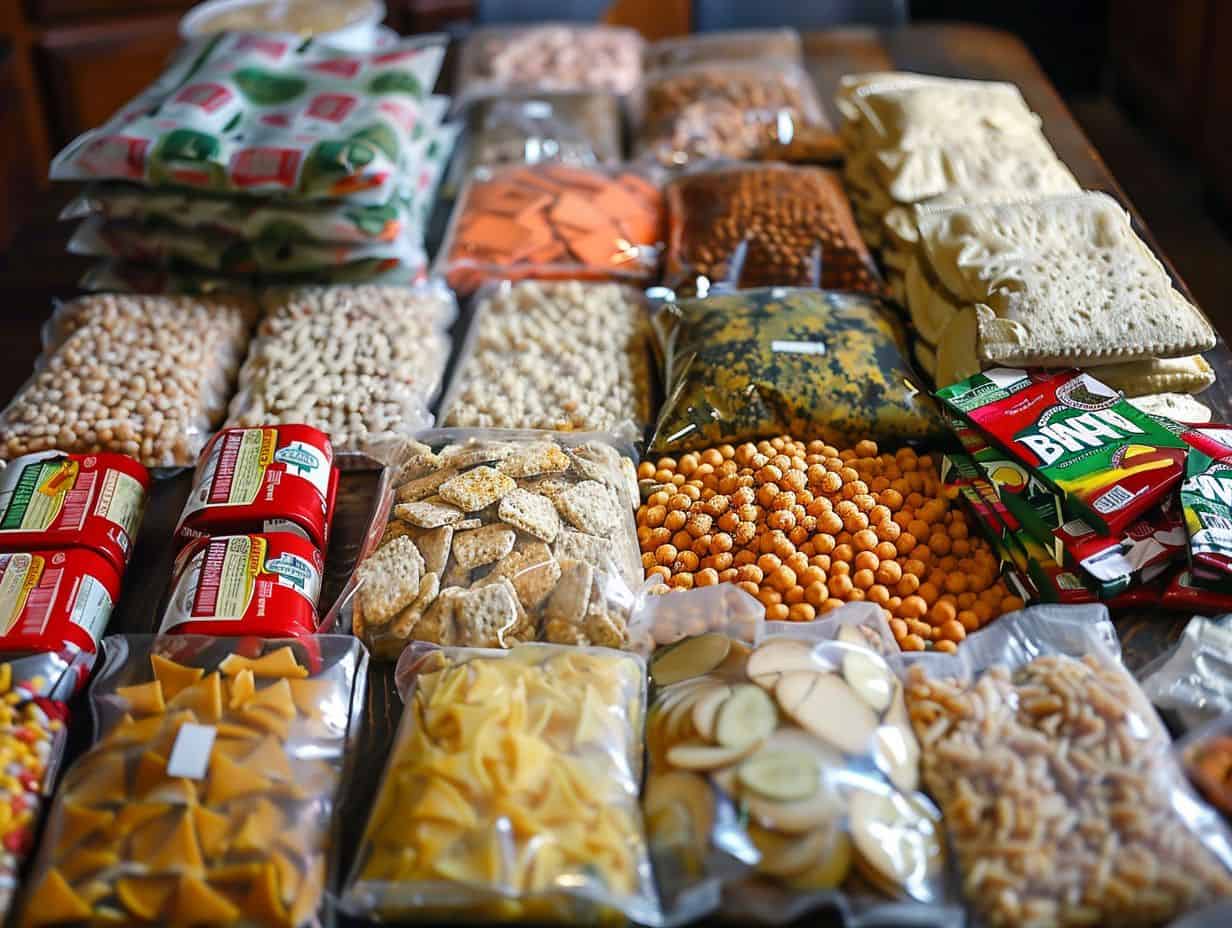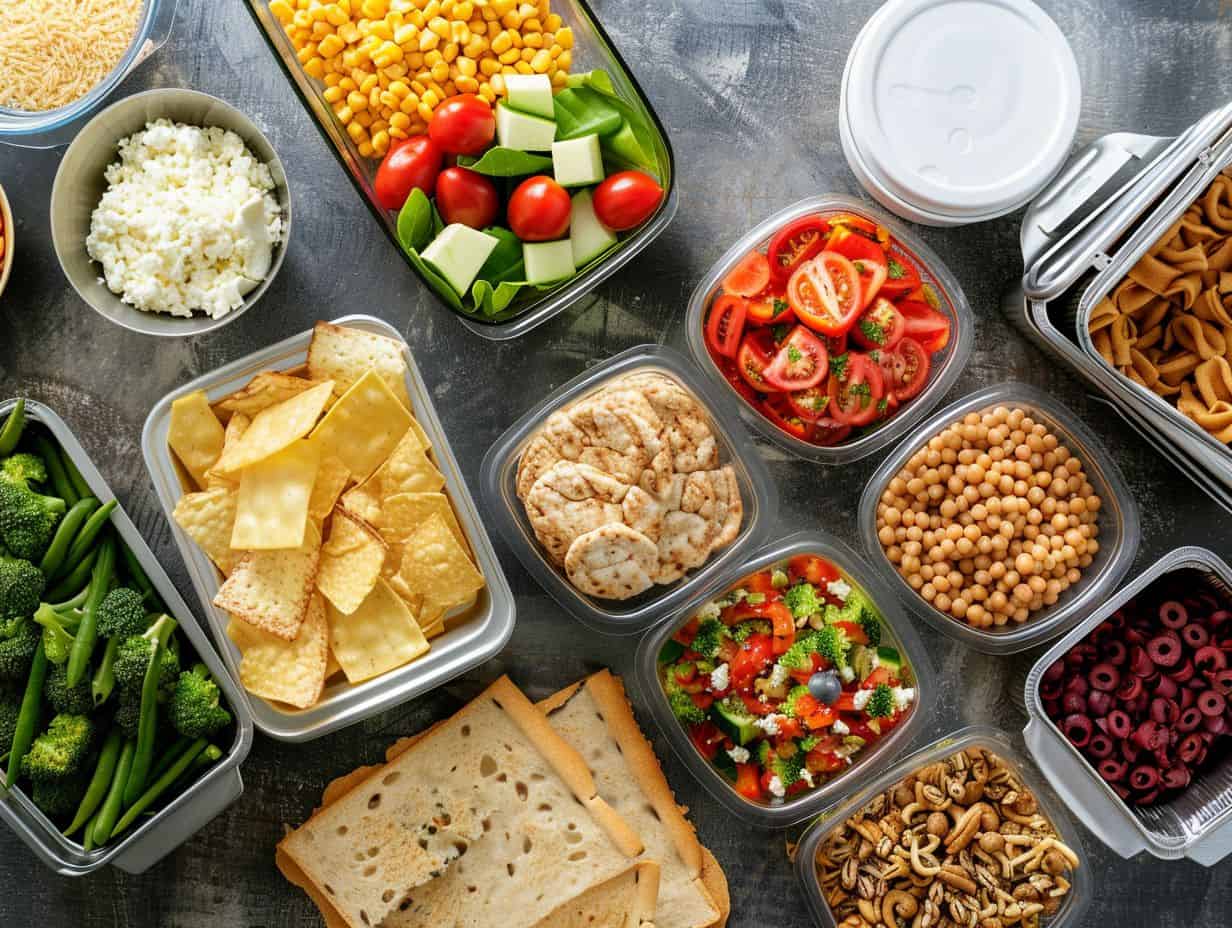In the present-day health-conscious environment, more individuals are actively choosing to prioritize their well-being.
One area where this shift is increasingly noticeable is in the consumption of Meals Ready-to-Eat (MREs). These convenient meal options have advanced to provide nutritious and low-sodium alternatives that meet the requirements of health-conscious individuals.
This discussion will delve into the significance of health-conscious decisions, the nutritional advantages of MREs, suggestions for integrating them into a healthy diet, and methods for reducing potential side effects.
The Importance of Health Conscious Choices
Health-conscious choices are important for maintaining a balanced diet and promoting overall wellness. Food choices play a significant role in an individual’s fitness journey and lifestyle. By prioritizing nutritious options, individuals can align their diet with their health and wellness goals.
When the body is fueled with nutrient-dense foods that are rich in vitamins, minerals, and antioxidants, it receives essential building blocks for optimal health and vitality. Incorporating a variety of colorful fruits and vegetables, lean proteins, whole grains, and healthy fats not only supports physical well-being but also boosts mental clarity and emotional balance.
Understanding the impact of portion sizes and meal timings can further enhance the positive effects of dietary choices on energy levels and overall performance. Making mindful decisions about food intake enables individuals to lead healthier and more fulfilling lives.
Why Are People Becoming More Health Conscious?
The increase in health-conscious decisions can be attributed to evolving wellness trends and heightened health awareness among individuals. People are adopting dietary trends that prioritize quality ingredients and align with their health objectives.
This shift towards healthier choices is also influenced by the growing availability of information on how food choices impact overall well-being. With a stronger focus on transparency and sustainability, consumers are seeking products that are not only nutritious but also ethically sourced.
The desire for healthier options is driven by the understanding that good nutrition plays a crucial role in preventing chronic diseases and promoting optimal health. As individuals gain more knowledge about the connection between diet and well-being, they are actively choosing foods that provide nourishment and support for their bodies.
What Are MREs?
MREs, also known as Meals Ready-to-Eat, are convenient meal options designed for easy consumption on-the-go. These pre-packaged meals serve a variety of purposes, including emergency preparedness, military provisions, and quick dining solutions.
They are valued for their portability and long shelf life, making them well-suited for outdoor activities, camping trips, or situations where traditional cooking facilities are not available. During emergencies like natural disasters or power outages, MREs offer essential sustenance with minimal preparation required. Their popularity in military operations is due to their compact packaging, nutritional content, and ease of distribution. Whether for hiking trips or tactical missions, MREs provide a versatile dining solution that meets diverse needs in various contexts.
How Are MREs Different from Traditional Meals?
Meal Ready-to-Eat (MRE) options offer several benefits compared to traditional meals. They are convenient, have a long shelf life, and come in compact packaging. These meal replacements cater to different dietary requirements and provide quick, portion-controlled meals that are free from preservatives.
In contrast to traditional meals that require preparation and cooking, MREs can be easily consumed on-the-go without any difficulty. Their compact packaging makes them suitable for situations where space is limited or during emergencies. Additionally, MREs do not need refrigeration, making them ideal for outdoor activities like camping or hiking. The portion control feature of MREs ensures that individuals consume the right amount of calories and nutrients, promoting a balanced diet effortlessly.
The Rise of Nutritious MRE Options
There is an increase in the availability of nutritious MRE options that cater to individuals in search of high-protein, low-fat, and nutrient-rich meals. These options provide notable health benefits and support performance nutrition goals.
These meal choices are formulated not only to supply essential nutrients for optimal performance but also to highlight ingredient transparency, allowing consumers to make informed decisions about their dietary intake. Including high-quality proteins, vitamins, and minerals, these MREs are customized to meet the requirements of those aiming to uphold a balanced diet while leading an active lifestyle. By selecting these nutrient-rich alternatives, individuals can enhance their overall well-being, boost energy levels, and ensure they receive the necessary fuel to excel in their daily activities.
What Are the Nutritional Benefits of MREs?
Nutritious MREs offer a range of nutritional benefits, including high dietary fiber content, increased energy levels, and the inclusion of natural ingredients. These options can also provide essential dietary supplements to support overall health and well-being.
High dietary fiber content in MREs contributes to digestive health by promoting regular bowel movements and aiding in weight management. The energy-boosting properties found in MREs are beneficial for maintaining stamina and endurance during physical activities. The natural ingredient composition of MREs ensures that consumers receive vital nutrients without artificial additives or preservatives, making them a wholesome choice for sustained energy and nutritional support.
What Are the Most Nutritious MRE Options?

Exploring various MRE options can lead to meals that are rich in high-quality proteins and offer flavorful choices. These options cater to various dietary preferences, including allergen-free, gluten-free, and vegan alternatives.
For individuals seeking nutritious meals with great flavors, choosing MRE options with high protein content is a good idea. There are allergen-free selections available for those with allergies, providing an extra layer of assurance. The availability of gluten-free and vegan alternatives ensures that individuals with specific dietary needs can enjoy the range of MRE meals. These options focus on nutritional value and offer a variety of tastes to suit different palates.
The Importance of Low-Sodium Options
Selecting low-sodium options is important for individuals who are conscious of their sodium intake and want to manage it effectively. These dietary choices are in line with culinary trends that cater to a variety of taste preferences.
Incorporating low-sodium choices into one’s diet can improve heart health and overall well-being. By choosing dishes that are intentionally made to be lower in sodium, individuals can take proactive measures to reduce their risk of hypertension and other related health conditions. This shift towards more mindful eating also provides an opportunity to explore a diverse range of flavorful ingredients and cooking methods that enhance the dining experience without compromising on taste.
Why Is Sodium Intake a Concern for Health Conscious Individuals?
Sodium intake is a significant consideration for health-conscious individuals, given its impact on dietary requirements, potential food allergies, and the rising demand in the market for low-sodium products. The selection of convenient, low-sodium meals can effectively address these concerns.
Opting for low-sodium ingredients in cooking allows individuals to better manage their dietary needs and minimize the risk of adverse reactions among those with food allergies. The increasing availability of low-sodium options in supermarkets and restaurants reflects a growing recognition and preference for healthier choices. Cooking with low-sodium substitutes has gained popularity as people look for delicious dishes that align with their health objectives.
How to Choose Low-Sodium MREs
When choosing low-sodium MREs, it is important to adhere to dietary guidelines that encourage healthy eating practices and highlight sustainable ingredient procurement. Providing transparency about ingredients allows for well-knowledge-based decision making when maintaining a low-sodium diet.
Considering the environmental impact of food production, selecting MREs that are made from locally sourced and organic ingredients can further bolster the sustainability of dietary choices. Seek out labels that denote responsibly sourced proteins, whole grains, and fresh produce to ensure a balanced and nutritious meal. By giving precedence to low-sodium options containing clean, natural ingredients, individuals not only support their own health but also contribute to a more environmentally friendly food system.
What to Look for on Nutrition Labels
When evaluating nutrition labels on low-sodium MREs, it is important to focus on key dietary guidelines, the nutritional information provided, details about calorie content, and the shelf-stable nature of the product. Understanding these components of the label can assist in making informed decisions about dietary choices.
Paying attention to the nutritional content listed on the labels allows for customization of meals to meet individual body needs. It is essential to look for key nutrients such as protein, fiber, vitamins, and minerals, in addition to monitoring serving sizes and calorie counts. Monitoring calorie intake is crucial for managing a healthy weight and ensuring that consumption is not excessive.
The shelf-stable characteristics of MREs make them a convenient option for emergency situations or for on-the-go meals, providing a dependable source of nutrition regardless of location.
How to Read Ingredient Lists
Understanding ingredient lists on low-sodium MREs is important for assessing their flavor profiles, recognizing customized menu options, and selecting suitable meal choices. By reading ingredient lists carefully, individuals can identify menu options that align with their dietary preferences.
Delving into the ingredient list of low-sodium MREs allows customers to explore a wide range of flavorful options tailored to their personal tastes. This transparency enables individuals to make informed decisions about their meals, whether they prefer traditional favorites or want to experiment with unique culinary creations. With a focus on diverse ingredients and customizable menus, these MREs provide opportunities for individuals to embark on a culinary journey that caters to their specific dietary needs and flavor preferences.
Tips for Incorporating MREs into a Healthy Diet

Incorporating MREs into a healthy diet can provide numerous benefits for individuals, particularly fitness enthusiasts looking for high-quality meals and performance nutrition. These ready-to-eat options can help improve health outcomes and effectively support nutritional objectives.
By adding MREs to their daily regimen, fitness enthusiasts can appreciate the convenience of having access to well-balanced meals tailored to sustain their active lifestyle. These pre-packaged meals are often enriched with essential nutrients like protein, carbohydrates, and vitamins, which are beneficial for refueling energy levels and supporting muscle recovery post-workout. MREs eliminate the need for meal preparation and planning, saving time and ensuring individuals can adhere to their dietary requirements even when dealing with busy schedules.
How Often Should MREs Be Consumed?
Determining the frequency of MRE consumption depends on individual needs, meal frequency preferences, portion sizes, and current culinary trends. These quick snacks can be incorporated into one’s routine based on dietary requirements and lifestyle.
For example, if someone prefers smaller, more frequent meals throughout the day, incorporating MREs as snacks in between could help maintain energy levels and curb hunger. On the other hand, if one opts for larger meals with fewer snacks, using MREs as convenient meal replacements during busy days can ensure nutritional needs are met. Staying informed about popular culinary trends can inspire creative ways to enhance the taste and variety of MRE choices, making them more enjoyable to include in daily eating habits.
How to Balance MREs with Fresh Foods
Achieving a balance between MREs and fresh foods involves effective meal planning, on-the-go snack options, and varied menu selections. By incorporating fresh foods alongside MREs, one can maintain a diverse and nutritious diet that caters to dietary preferences.
Meal planning plays a crucial role in balancing MRE consumption with fresh foods. Planning meals ahead of time allows individuals to incorporate a mix of MREs and fresh produce, helping them achieve a well-rounded diet. Opting for convenient snack choices like nuts, dried fruits, or energy bars can complement MRE-based meals. Variety is essential in menu selections; including a range of proteins, carbohydrates, and vegetables can enhance the nutritional value of meals. Making mindful choices and planning thoughtfully can help ensure that one’s diet remains both convenient and nutritious.
Potential Side Effects of Consuming MREs
The consumption of MREs may carry potential side effects and risks for individuals, particularly those with dietary restrictions or specific taste preferences. Understanding these factors can help minimize adverse effects and enable knowledge-based decision making regarding MRE consumption.
Individuals with dietary restrictions should exercise caution when choosing MRE options, as certain products may contain allergens that have the potential to trigger adverse reactions. For those with specific taste preferences, the limited variety of MRE flavors could result in dissatisfaction or reduced consumption. Being mindful of these potential risks can enable individuals to seek out allergen-free alternatives and explore choices that align with their taste preferences, ultimately facilitating a more enjoyable and safe MRE eating experience.
What Are the Risks of Eating MREs?
The risks associated with consuming MREs include potential side effects related to specific dietary restrictions, the long shelf life of the meals, and variations in flavor combinations. Understanding these risks can assist individuals in making informed decisions about their MRE choices and managing any negative consequences that may arise.
Regarding dietary restrictions, MREs may not always accommodate individual needs, potentially causing discomfort or health issues for those with specific dietary requirements. The long shelf life of MREs, though convenient in certain scenarios, may also mean that the meals contain high levels of preservatives or artificial ingredients that may not be suitable for extended consumption. Additionally, the diversity of flavor combinations in MREs, while offering choices, can sometimes result in inconsistencies in taste and quality, prompting consumers to seek more dependable alternatives.
Frequently Asked Questions
1. What are MRE options?

MRE stands for “Meals Ready to Eat,” which are pre-packaged meals commonly used by the military and outdoor enthusiasts. These meals are designed to provide quick, easy, and nutritious sustenance in any situation.
2. How have MRE options evolved in recent years?
In recent years, MRE options have evolved to include a wider variety of nutritious and low-sodium options. As more people become health-conscious, the demand for healthier MRE options has increased, leading to the rise of these alternatives.
3. What makes these MRE options more health-conscious?
These MRE options are made with healthier ingredients, such as whole grains, lean proteins, and fresh fruits and vegetables. They also have reduced sodium levels, making them a better choice for those watching their salt intake.
4. Are these MRE options suitable for people with dietary restrictions?
Yes, many of these MRE options are suitable for people with dietary restrictions. They often have options for vegetarians, vegans, gluten-free diets, and more. Always check the label or ingredient list to ensure it meets your specific dietary needs.
5. Can these MRE options be used for weight loss or management?
Yes, these MRE options can be a convenient and nutritious option for weight loss or management. They are portion-controlled and made with healthier ingredients, making it easier to stay on track with your health goals while on-the-go.
6. Where can I find these healthier MRE options?
These healthier MRE options can be found at outdoor recreation stores, health food stores, and online retailers. They may also be available at some grocery stores or military surplus stores. Be sure to check the label for nutrition information and ingredients before purchasing.


